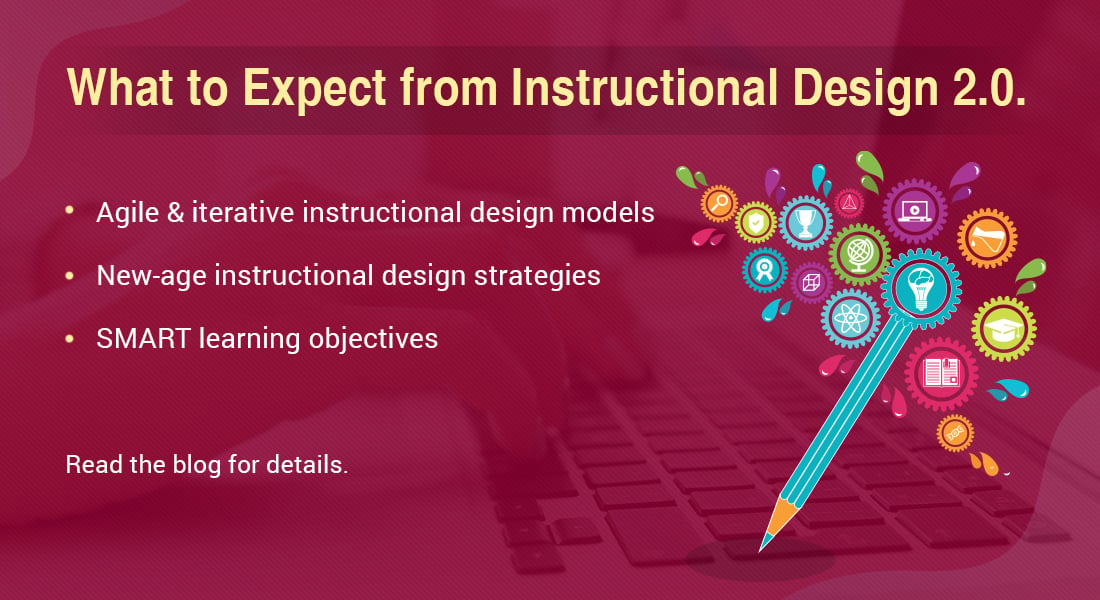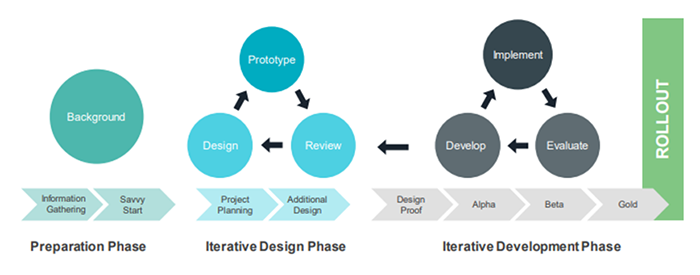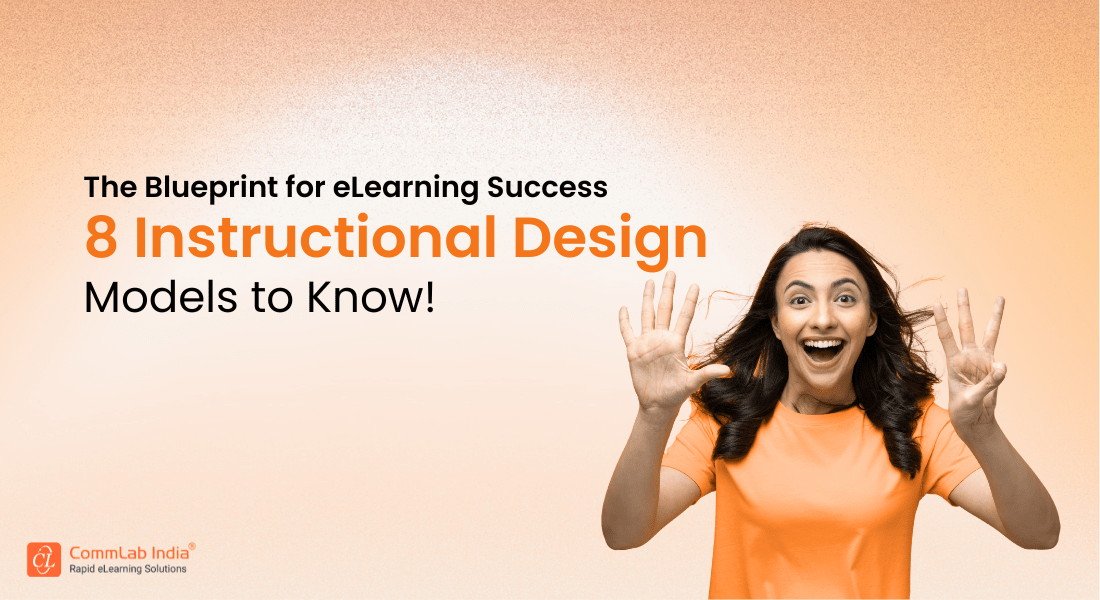Instructional Design 2.0 to Keep Pace with Evolving Corporate L&D

Instructional design simply means to systematically create learning experiences that will enable learners to engage with corporate training, absorb and retain the information easily, and apply it to their job tasks. If you go by this definition, you’ll see that this is our job descriptions in some shape or form. Whether we are instructional designers, developers, project managers, or training managers, we all need to have basic knowledge of instructional design and its principles to do our jobs better. So, this blog is about instructional design, how it has changed over the years, and what Instructional Design 2.0 brings to the game.
What’s Instructional Design 2.0 All About?
- Instructional design models – ADDIE & SAM
- New-age instructional strategies – storytelling, scenarios, simulations, and more
- SMART learning objectives
Instructional Design: Then and Now
Instructional design is not a new thing, nor is it limited to online training or even corporate L&D. From philosophers like Plato to educational psychologists like Benjamin Bloom to neuroscientists like Dr Paul Kelley, there have always been people who have dedicated their lives to understanding learning processes and proposing new ideas on learning, training, and educating.
But instructional design took on a new life as a formal, theoretical subject during the second world war when people across the globe, both military and civilian, suddenly had to take on totally new tasks, roles and responsibilities, and become proficient at them in a very short time. Rapid industrialization, commercialization, and later globalization, all helped this evolve further. Today, corporate L&D is an industry on its own and instructional design is at its very heart.
Also, though instructional design has always seemed to be about eLearning, it is equally important for in-person classroom training, virtual classroom sessions, or a blended approach, and is the basis of a successful corporate training strategy.
Watch this video to learn how instructional design shapes eLearning!
Instructional Design 2.0 for Modern Corporate Learning and Development
1. Instructional Design Models: The Age of SAM
Instructional design models are the guidelines and strategic ways in which L&D professionals approach planning, designing, developing, and delivering training to learners. There are many instructional design models – ADDIE, Dick and Carey, SAM, and more. And different organizations approach instructional design differently. But the most popular among these models are ADDIE and SAM.
ADDIE stands for Analysis, Design, Development, Implementation, and Evaluation. It is a linear approach to the process of training design and development where each phase is finished and perfected before moving on to the next phase. While it is a perfectionist model, it is also very time consuming and makes it very difficult to backtrack in case of an error or change.
SAM stands for Successive Approximation Model – a more iterative and agile development process compared to ADDIE. It is a cyclic process with three phases – the planning phase, design phase, and development phase. And each phase is carried out and improved upon till the result is approved and signed off by stakeholders. This makes SAM more popular in today’s corporate L&D because it avoids last minute and surprises rework and makes it possible to keep up with the changing training demands with rapid eLearning development.

2. Instructional Design Strategies: New-age Learning for New-age Learners
It is important to understand the difference between an Instructional Design Model and an Instructional Design Strategy as it is very easy to get confused between the two. Instructional design models are about how training design and development is carried out. On the other hand, an instructional design strategy is a high-level approach on presenting learning content, media, eLearning interactivities, and assessments in a way that is engaging, effective, and retentive.
Considering the evolving learning methods, learning technology, and learner profiles, it is easy to see why instructional design strategies need to change to keep up. Here are some new-age instructional design strategies for effective learning.
Storytelling
Human brains are wired to respond to storytelling.
Source: Harvard Business Review
Storytelling in eLearning is an effective way of connecting learners with the training. You can weave a story to transform the most boring content to captivate the learners and get them emotionally invested in the story, making it easy for learners to engage, understand, and remember it.
Guided Learning (Avatars)
Here, characters (real or vector images) act as guides for learners in a course. These characters or avatars take on the role of a virtual instructor in the absence of a physical one.
Let's explore how you can use Synthesia to design engaging AI avatars.
Scenario-based Learning
Scenario-based learning is used to teach learners to apply their learning to real-life situations – to use the information they have, think critically, and take decisive steps. It is also known as the problem-based learning strategy because it essentially gives learner a specific problem and enables them to resolve it.
It can be a really good strategy when learners need to be trained on soft-skills or compliance issues where there may be one specific right or wrong answer that depends on the context.
LEAD (Learning through Exploration and Discovery)
The LEAD strategy gives learners flexibility on the direction they want to proceed in a training course and how to pace their own learning. It is an effective strategy for employee onboarding training where learners need to know a variety of information (all of it equally important) and can afford to choose their own learning path.
Simulations
This instructional design strategy is used when learners need to apply their knowledge to gain hands-on experience and practice in a safe environment without the risk of severe consequences in case of errors. Simulations place learners in an environment that mimics their real-life job environment to give them a sense of what they encounter in their job-tasks. They are especially useful when the job falls under high risk category (financial or physical).
3. Learning Objectives: The SMART Way towards Instructional Design 2.0
A discussion on instructional design is incomplete without talking about learning objectives. Amidst the constantly evolving corporate L&D world, the only constants are the instructional design principles that guide the framing of learning objectives.
- Learning objectives should always be aligned to business goals.
- They should form the basis for how the eLearning course is designed – the content, the instructional strategy, the assessment, the cost and duration of the course – they should all be aligned to the learning objectives.
- They should be performance based with carefully set conditions and criteria.
- They should be SMART – Specific, Measurable, Attainable, Relevant, and Timely
End Note
Instructional design is the most basic and most important part of any L&D project. And I hope this blog has helped you gain some insights on how instructional design operates in the modern corporate L&D. Feel free to download our eBook for some more detailed interesting insights on instructional design.








